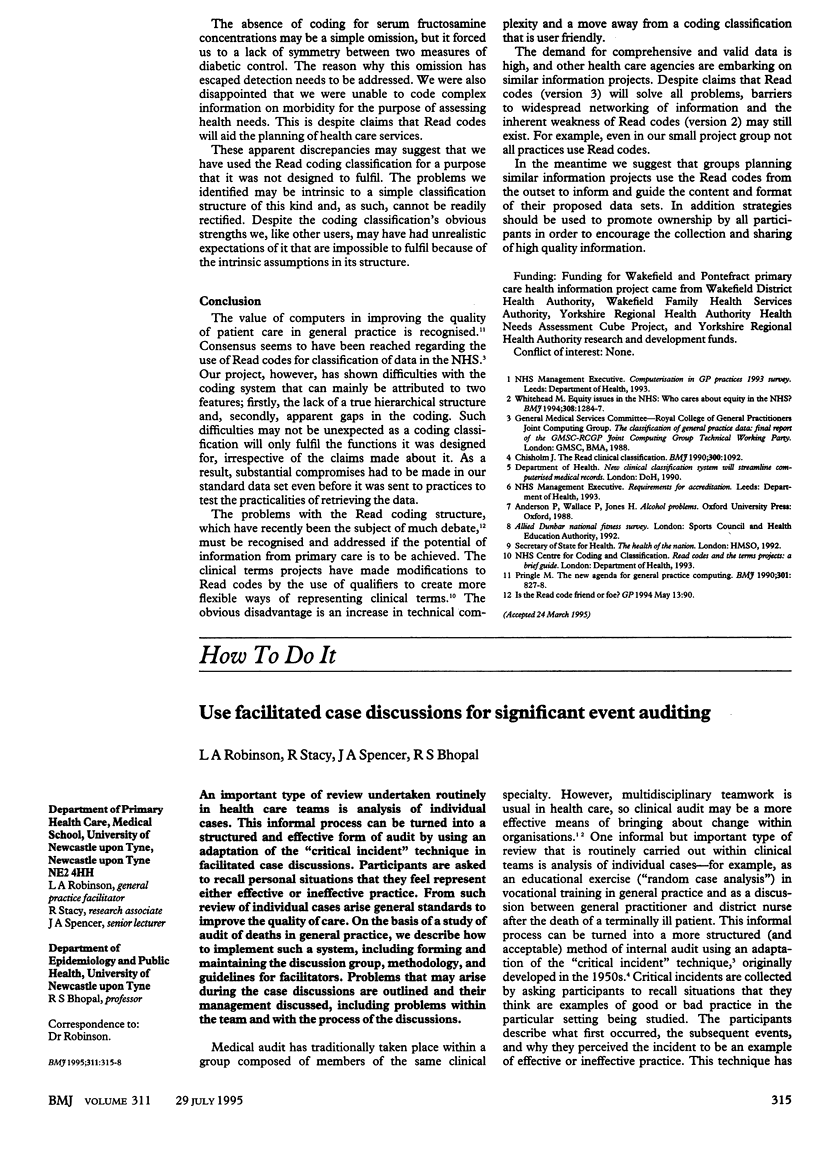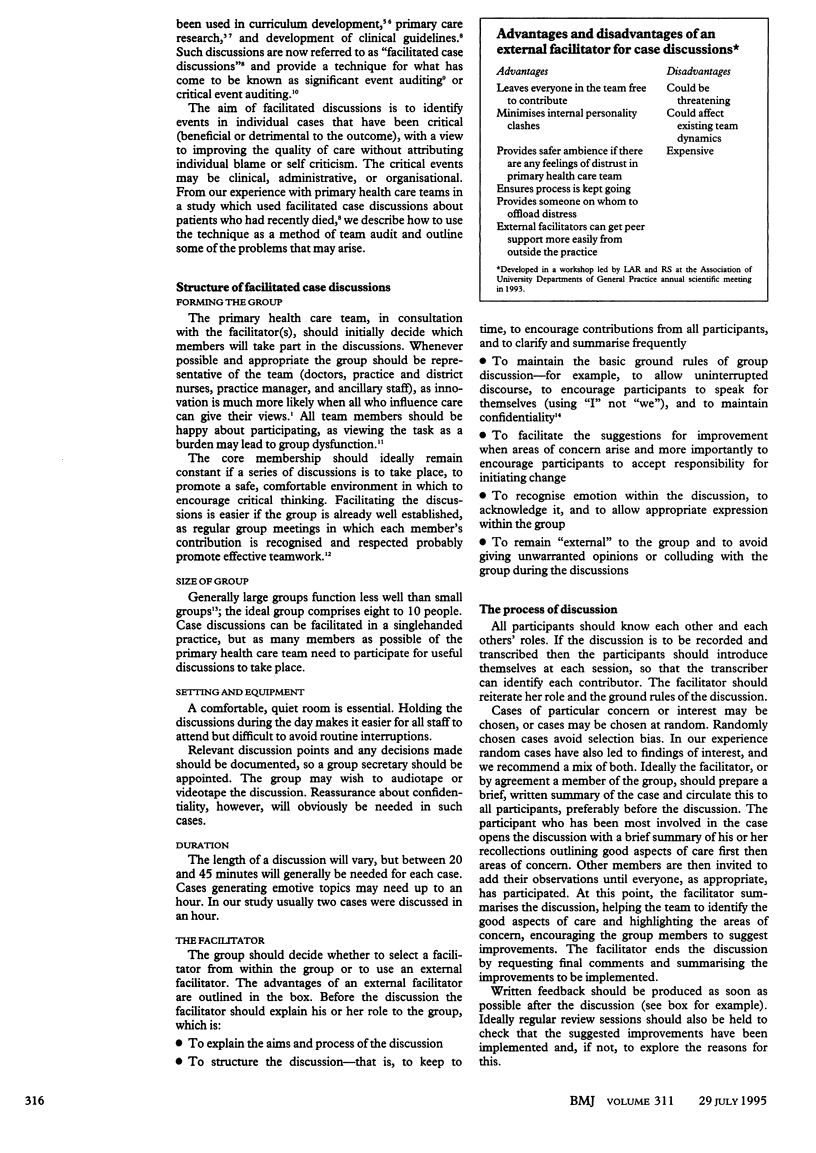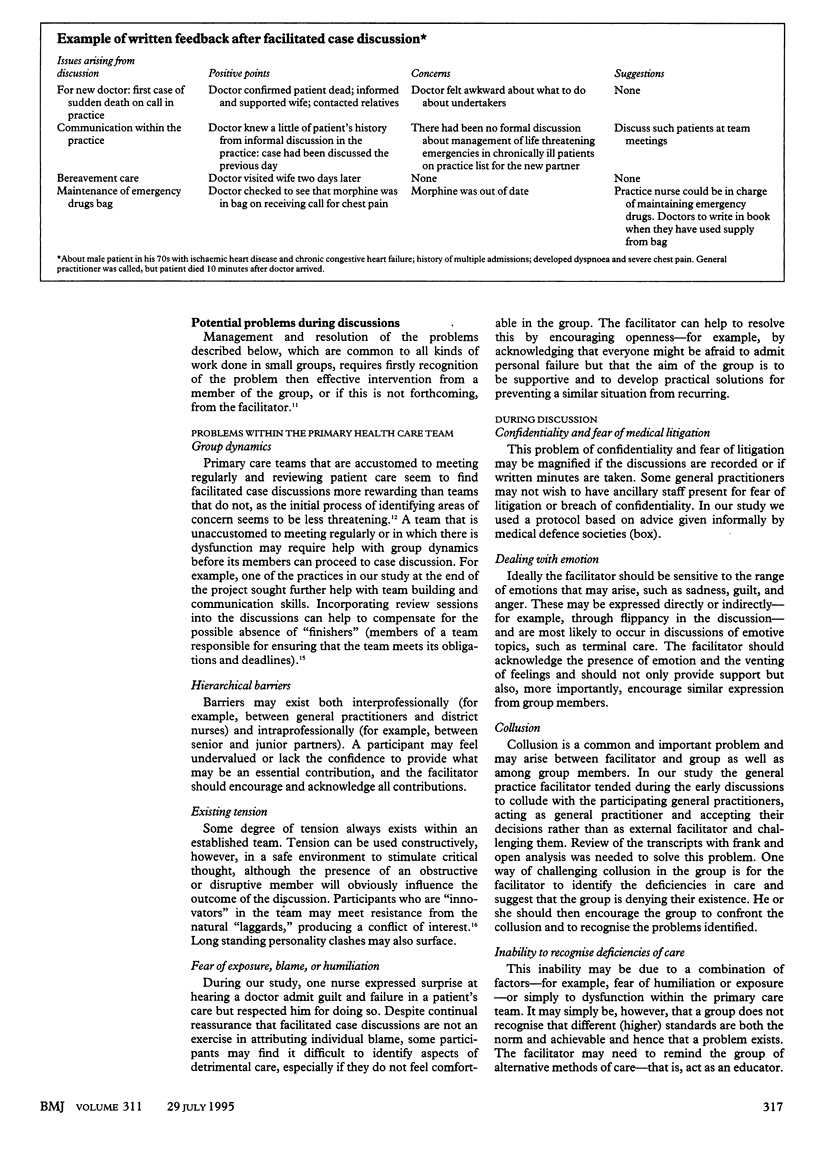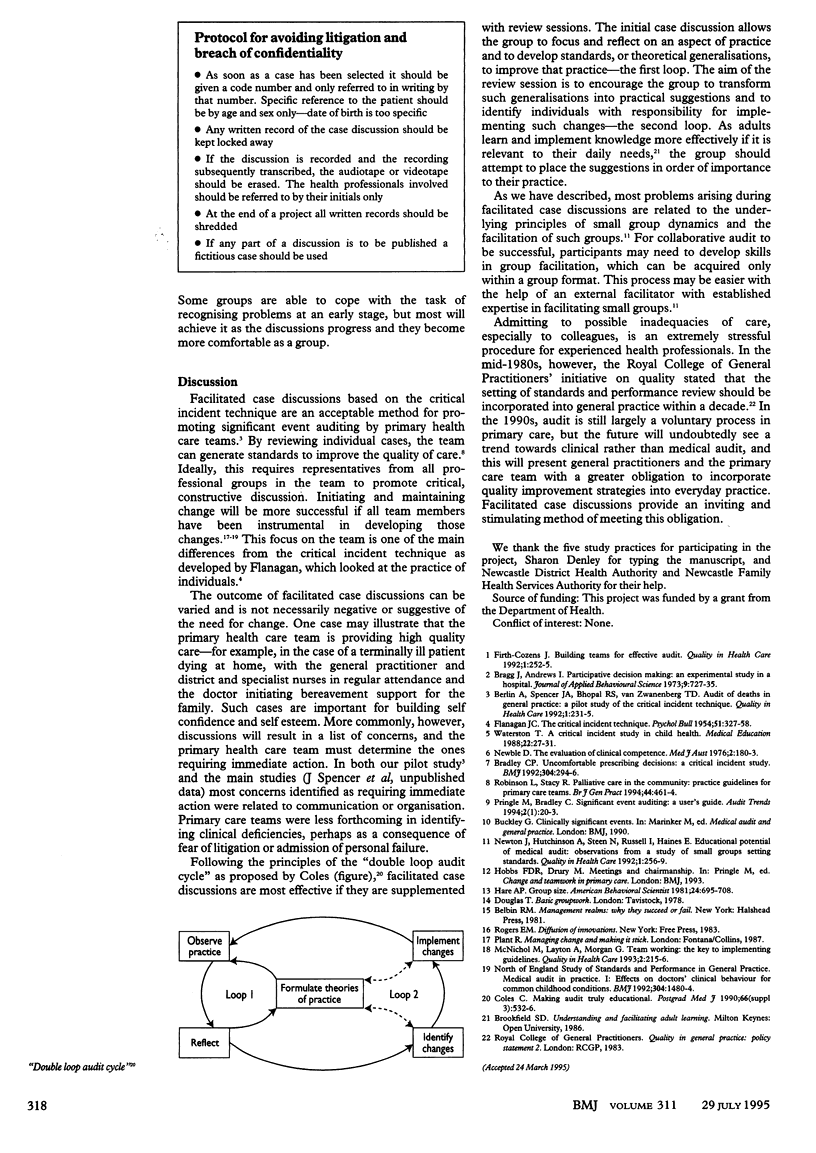Abstract
An important type of review undertaken routinely in health care teams is analysis of individual cases. This informal process can be turned into a structured and effective form of audit by using an adaptation of the "critical incident" technique in facilitated case discussions. Participants are asked to recall personal situations that they feel represent either effective or ineffective practice. From such review of individual cases arise general standards to improve the quality of care. On the basis of a study of audit of deaths in general practice, we describe how to implement such a system, including forming and maintaining the discussion group, methodology, and guidelines for facilitators. Problems that may arise during the case discussions are outlined and their management discussed, including problems within the team and with the process of the discussions.
Full text
PDF



Selected References
These references are in PubMed. This may not be the complete list of references from this article.
- Berlin A., Spencer J. A., Bhopal R. S., van Zwanenberg T. D. Audit of deaths in general practice: pilot study of the critical incident technique. Qual Health Care. 1992 Dec;1(4):231–235. doi: 10.1136/qshc.1.4.231. [DOI] [PMC free article] [PubMed] [Google Scholar]
- Bradley C. P. Uncomfortable prescribing decisions: a critical incident study. BMJ. 1992 Feb 1;304(6822):294–296. doi: 10.1136/bmj.304.6822.294. [DOI] [PMC free article] [PubMed] [Google Scholar]
- FLANAGAN J. C. The critical incident technique. Psychol Bull. 1954 Jul;51(4):327–358. doi: 10.1037/h0061470. [DOI] [PubMed] [Google Scholar]
- Firth-Cozens J. Building teams for effective audit. Qual Health Care. 1992 Dec;1(4):252–255. doi: 10.1136/qshc.1.4.252. [DOI] [PMC free article] [PubMed] [Google Scholar]
- McNicol M., Layton A., Morgan G. Team working: the key to implementing guidelines? Qual Health Care. 1993 Dec;2(4):215–216. doi: 10.1136/qshc.2.4.215. [DOI] [PMC free article] [PubMed] [Google Scholar]
- Newton J., Hutchinson A., Steen N., Russell I., Haimes E. Educational potential of medical audit: observations from a study of small groups setting standards. Qual Health Care. 1992 Dec;1(4):256–259. doi: 10.1136/qshc.1.4.256. [DOI] [PMC free article] [PubMed] [Google Scholar]
- Robinson L., Stacy R. Palliative care in the community: setting practice guidelines for primary care teams. Br J Gen Pract. 1994 Oct;44(387):461–464. [PMC free article] [PubMed] [Google Scholar]
- Waterston T. A critical incident study in child health. Med Educ. 1988 Jan;22(1):27–31. doi: 10.1111/j.1365-2923.1988.tb00405.x. [DOI] [PubMed] [Google Scholar]


